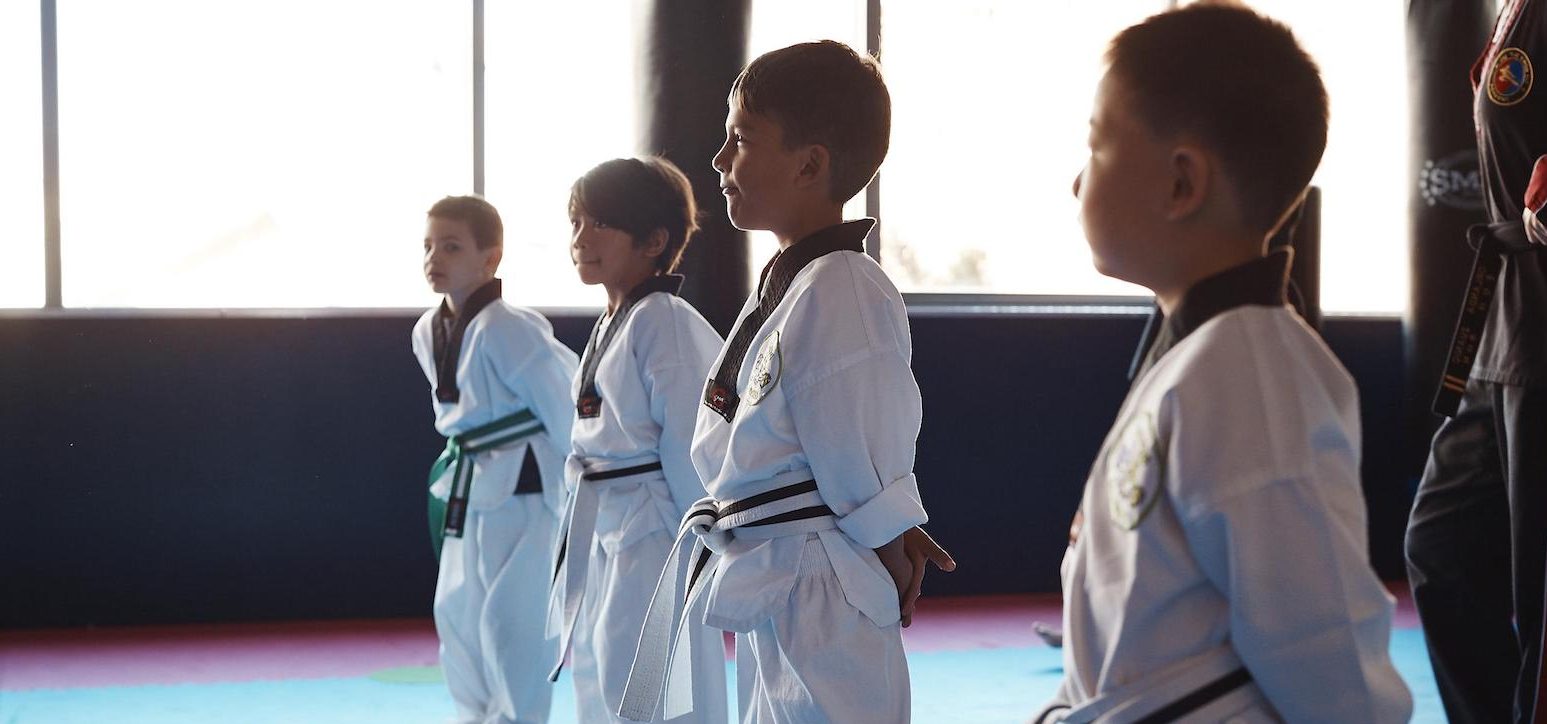More to Martial Arts than just kicking and punching. The common thought is that Martial Art just teaches your child self defence, but the truth is there is so much more. The physical skills learnt in Martial Arts transfer to other sports and activities, while the life skills and values will stay with your child for a long time. Read below to see how our Kicking Dragons program can help the development of your child as we introduce them to physical exercise and movement, martial arts, and structured learning.
Children in this early age bracket are entering a dynamic period of growth and development (coupled with their constant learning in either pre school or primary school). The skills and movements learnt in their Martial Art program transfer to other activities and games making Martial Arts all about personal development and self defence – to be discussed further below.
Children in this age bracket would be involved in our KICKING DRAGONS program and would be working on developing and improving the following developmental milestones:
- Focus
- Teamwork
- Controlling Emotions and Actions
- Memory and Recall
- Balance
- Discipline
- Fitness
- Coordination
- Perseverance
- Confidence
In addition to these ‘action’ milestones, we’re also working towards Physical, Intellectual, Emotional and Social developmental milestones. Some of these include:
Physical Development Milestones:
- Basic development of basic muscles – arms, legs, abs and cardiovascular endurance
- Basic development of balance and spatial awareness with the goal of performing continuous kicks (same leg or alternating) for extended periods of time without falling or losing position.
- Basic development of alternating arms to punch and block, and legs to kick. Starting to use all 4 limbs in alternating sequence.
- Basic development of controlling their body during extreme or intense movements.
- Basic development of spatial awareness between themselves and other objects – kicking targets, witches hats, hoops etc.
Intellectual Development Milestones:
- Basic development of following 2 to 5 action commands – for example: block, block, kick, kick, duck.
- Basic development of counting up to 20 as it applies to physical repetition – for example: count when your partner kicks the pad.
- Basic development of short term, long term and reactive memory.
- Basic development of grasping the purpose and importance of discipline in various environments – why we listen to the teacher, why we sit up straight, why we keep our hands to ourselves etc.
- Basic development of maintaining focus throughout various activities.
Emotional Developmental Milestones:
- Basic development of controlling emotions through various tasks – anger, frustration, excitement etc.
- Basic development of believing in themselves when trying something new. To fail, and to try again.
- Basic development of enjoying themselves through activities and challenges.
- Basic development of embracing discipline with pride (children naturally want to be praised).
- Basic development of maintaining a good attitude during competitions. An understanding that it isn’t always about winning and losing.
Social Development Milestones:
- Basic development of working together through various activities and challenges.
- Basic development of helping each other through various tasks and challenges.
- Basic development of sportsmanship through competitions.
- Basic development of meeting and maintaining positive relationships with peers and instructors.
- Basic development of leadership skills – demonstrating movements and behaviour to others.
An example of how this all fits:
Skill: Kicking a target correctly while alternating legs and maintaining balance. The target to be held by your partner.
Drill: Run to your partner ( a distance of 4 metres) and stop at the appropriate spot so that you can perform front snap kicks for 10 seconds while alternating legs and maintaining balance.
Benefits: In this drill the students will stand on their circle facing their partner at a distance from 2 metres to 4 metres. When prompted students will run to their partner and stop at a safe distance, once there they will continuously kick using both legs as they hit the kicking target correctly. Once the time limit of 10 seconds has been reached students run back to their circle. The focus in this activity is:
- Balance: Maintaining balance as they alternate kicking legs. This in turn helps to build strength in the legs.
- Spatial Awareness: Students must stop at the appropriate distance so that they can correctly kick the target.
- Alternating Body Parts: Students will alternate body parts to ensure they are practicing both sides of their body and not favouring one side.
- Counting: Students practice counting as they count when their partner is successfully hitting the target.
- Memory and Recall: Students are remembering multiple action commands so that they can correctly participate in the activity.
- Teamwork: Students are working safely with their partner by correctly holding the kicking target, and by correctly kicking the target.
- Sportsmanship: Students are having fun while trying to beat their partners score in a fun and friendly environment.

